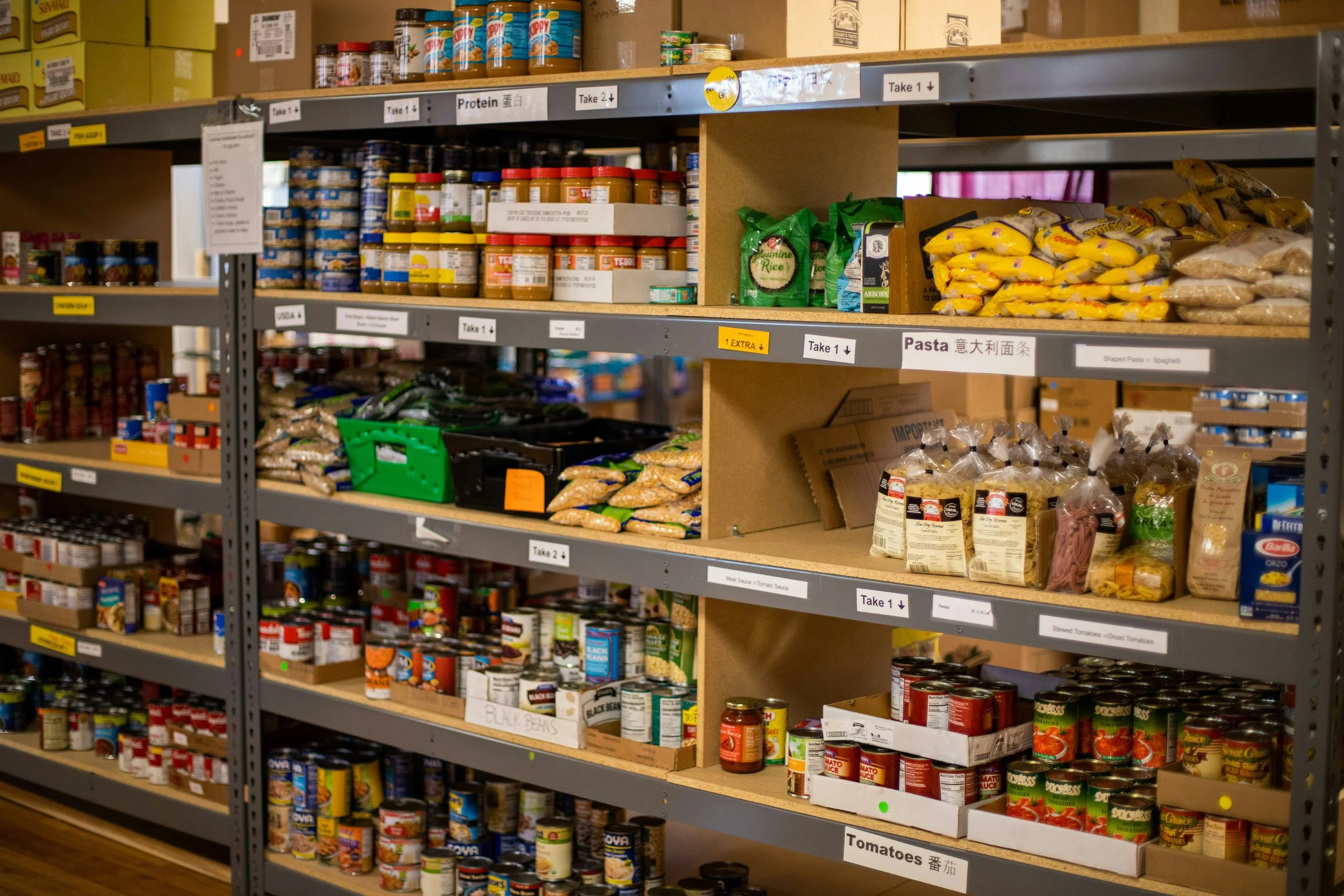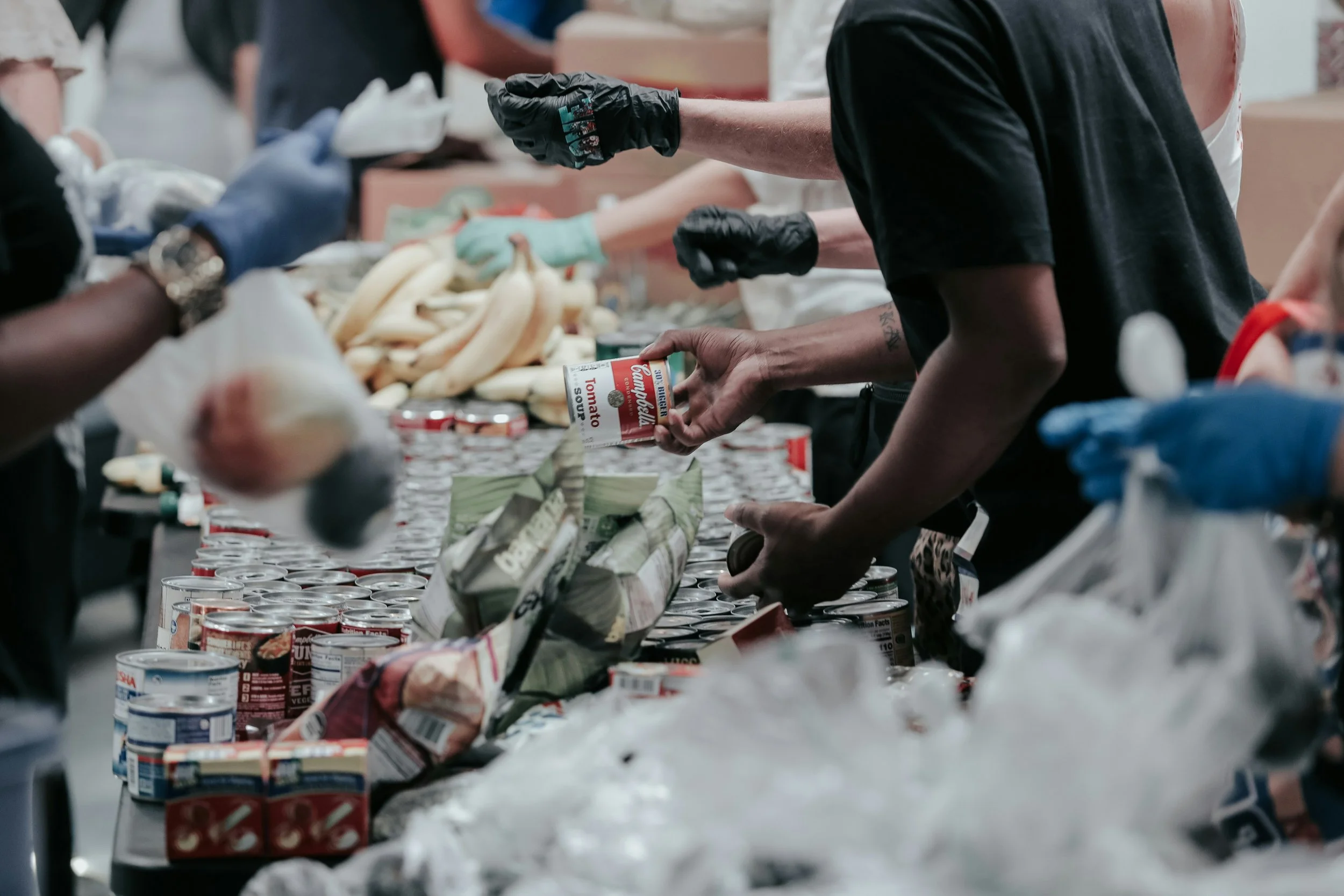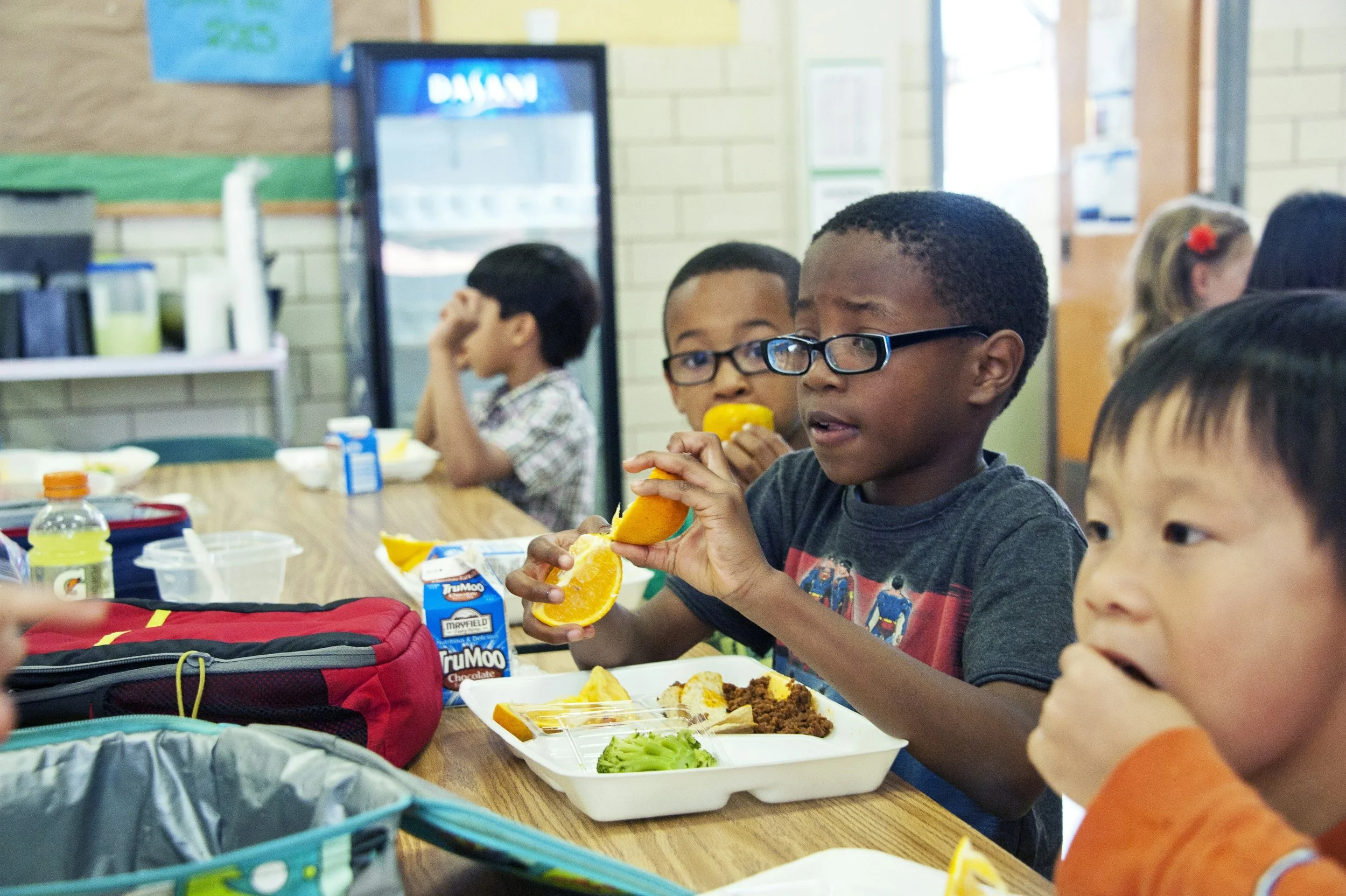Feeding Inequality: The Rising Cost of Food and Its Impact on Vulnerable Communities
Food insecurity which is defined as limited or uncertain access to sufficient, nutritious food, has become a critical public health issue in the UK. Recent data reveals a significant increase in the number of households experiencing food insecurity, with low-income families and ethnic minorities being the most affected due to factors including socio-economic challenges, systemic racism, and poor education.
Affected Population Groups
Around 1 million adults (3.6%) reported going a whole day without eating in the past month due to lack of access or affordability.
15% of households with children report food insecurity, compared to 11% of all households. Children remain highly vulnerable as:
4.3 million children live in poverty in the UK.
1.7 million young people aged 11–19 are affected, with 30% of 11–15-year-olds and 31% of 16–19-year-olds living in poverty.
Children in food-insecure households are more likely to experience obesity, tooth decay, and poor mental health, especially in deprived areas.
Ethnic minority groups also face high levels of food insecurity, as well as poverty due to systemic inequalities, lower income levels, and housing insecurity. Black African, Caribbean, Pakistani, and Bangladeshi communities are consistently reported to be at greater risk of food insecurity compared to White British/Irish groups.
Even after adjusting for socio-economic position, Caribbean and Pakistani groups still show significantly lower vegetable intake, suggesting persistent structural barriers, which include:
Overrepresentation in low-paid, insecure jobs
Higher unemployment rates reducing household income and purchasing power
Reduced access to social safety nets and healthcare
Many ethnic minority households reside in areas with limited access to affordable, healthy food, commonly referred to as food deserts.
Food bank usage is higher among specific ethnic minorities including Black communities, reflecting deeper hardship and exclusion from mainstream support systems.
Education as a Social Determinant of Food Security
Education is a key social determinant of health, further compounds these disparities.
Educational attainment is a powerful predictor of food security. Individuals with limited formal education are more likely to:
Work in precarious or low-paid jobs
Experience long-term unemployment or underemployment
Lack access to nutrition literacy and health-promoting behaviours
Poor education not only restricts economic mobility but also limits the ability to make informed, autonomous food choices. This is particularly concerning in environments where healthy options are unaffordable or inaccessible. Also, children growing up in food-insecure households often struggle academically due to hunger, stress, and reduced concentration, behavioural challenges, and long-term health consequences, perpetuating intergenerational cycles of deprivation.
Specific ethnic minorities and population groups and their susceptibility to food insecurity:
Black African & Caribbean groups have higher food bank use, lower veg intake, systemic barriers
Pakistani & Bangladeshi groups have the lowest vegetable intake, persistent disparities post-SEP
Low education levels are linked to lower income, poor diet quality, higher risk
Children in food-insecure homes tend to have lower academic performance, emotional stress, poor health
Food Inflation and The Continued Rising Food Prices
Food inflation peaked at 19.1% in March 2023, the highest since 1977. As of mid-2025, food prices are still rising 4.9% year-on-year as of July 2025, with staples like bread, dairy, and vegetables seeing the sharpest increases.
This surge in price has disproportionately impacted low-income households, with the bottom 10% of lowest-income households spending a higher proportion of their income on food and non-alcoholic drinks, making them more vulnerable to price shocks. As a result, in 2022/23, 7.2 million people were food insecure, up 2.5 million from the previous year. This saw a surge in food bank usage, with 6.5 million people turning to charitable food providers in 2024 alone.
Currently, in 2025, 14.1 million people (1 in 6 households) are now experiencing food insecurity, with disabled people, families with children, and benefit recipients most at risk.
Other causes of food inflation:
Global supply chain disruptions from COVID-19 and geopolitical tensions (including the war in Ukraine and recent Middle East instability) continue to affect food imports and commodity prices.
Climate change and extreme weather have led to poor harvests and reduced crop yields, especially in Europe and sub-Saharan Africa, pushing up prices for staples like grains and vegetables.
Energy costs, while stabilise somewhat in 2025, remain elevated compared to pre-pandemic levels. Energy-intensive sectors like food production and transport are still passing costs onto consumers.
Economic Challenges
Low economic growth persists, with the UK facing weak productivity, subdued investment, and a risk of stagflation (low growth + high inflation).
Inflation remains stubborn, especially in food, housing, and energy. While general inflation has eased slightly, food inflation continues to outpace it.
Welfare reforms and benefit cuts have deepened financial strain for low-income households. The removal of pandemic-era support and delays in uprating benefits have left many families exposed.
Food expenditure flexibility means households often reduce food spending first when budgets tighten. This disproportionately affects low-income groups, who already spend a larger share of income on essentials. As food prices continue to rise, these households may face increased food insecurity and financial hardship.
Where Do We Go from Here?
The UK Food Security Report 2024, published by the Department for Environment, Food & Rural Affairs (Defra), underscores the complexity of the crisis. It highlights both global and domestic pressures on the food system, including geopolitical instability, climate-related disruptions, labour shortages, and the long-term degradation of the UK’s natural capital. These systemic challenges are compounded by inflation, stagnant wages, and welfare reforms, all of which have contributed to a sharp decline in household food security.
The report identifies five key themes shaping the UK’s food security landscape:
Global Food Availability: While global production remains stable, undernourishment is rising worldwide, increasing pressure on supply chains.
UK Food Supply Sources: The UK’s heavy reliance on imports, particularly for fruits, vegetables, and seafood makes it vulnerable to external shocks.
Supply Chain Resilience: Input costs such as energy and fertiliser, and labour shortages continue to strain the agri-food sector.
Household Food Security: Inflation has led to a marked decline in food-secure households, with lower-income groups least likely to meet dietary recommendations.
Consumer Confidence: Trust in food safety remains high, but concerns about affordability have grown significantly since 2021.
The report calls for rebalancing the cost of the food basket to make healthy options more affordable, strengthening nutritional safety nets for children and trigger thresholds for emergency action when food insecurity spikes.
Government Initiatives
Healthy Start Scheme continues to support low-income families with vouchers for fruit, vegetables, milk, and vitamins. Uptake remains a challenge, prompting calls for automatic enrolment.
Holiday Activities and Food Programme remains active, offering meals and enrichment activities during school holidays for children eligible for Free School Meals.
Good Food Cycle (2025): A new cross-government strategy aiming to:
Improve access to healthy, affordable food
Expand Free School Meals to 500,000 more children
Roll out universal breakfast clubs in all primary schools
Build resilient supply chains and reduce diet-related health costs.
School Programs
Free School Meals were expanded this year to reach more children, especially in deprived areas, to improve nutrition, attendance, and attainment.
Universal Free Breakfast Clubs were rolled out nationally in April 2025. These 30-minute sessions provide nutritious breakfasts and childcare support, saving families up to £450/year.
School Food Banks: Some schools have established on-site food banks or pantries to support families facing acute hardship.
Community Efforts
Food Banks and Pantries: Over 1,700 Trussell Trust locations and 1,172 independent food banks operate across the UK. In 2024/25, over 1 million food parcels were distributed to children.
Food Redistribution Programs:
£13.6 million in government grants (2025) support redistribution of 19,000 tonnes of surplus farm produce via charities like FareShare, City Harvest, and Food in Community.
These programs reduce waste and provide fresh food to shelters, schools, and community kitchens.
Community Gardens and Kitchens: Local initiatives promote food growing, cooking skills, and social connection. These are supported by councils and NGOs as part of resilience-building strategies.
Summary
Food insecurity in the UK is a complex and growing challenge, shaped by rising food prices, economic instability, and deep-rooted structural inequalities. While many households are feeling the strain, the impact is most severe for low-income families, children, and ethnic minority communities.
As the cost of living continues to rise, maintaining access to nutritious, affordable food has become increasingly difficult. Ethnic minority groups face compounded risks due to systemic racism, educational disadvantage, and limited access to social support. Addressing these disparities requires intersectional, systemic approaches that go beyond emergency food aid.
Key Strategies for Change
Targeted Policy Interventions: Government action must include expanding financial support, increasing access to healthy food, and tackling the root causes of poverty and inequality.
Education and Empowerment: Improving access to education and nutrition literacy can help individuals make informed choices and build resilience.
Community-Led Solutions: Local food banks, pantries, gardens, and redistribution schemes play a vital role in supporting vulnerable households.
Supply Chain Resilience: Stabilising food prices requires addressing upstream drivers such as energy costs, labour shortages, and climate-related disruptions. Investing in sustainable agriculture and domestic production is key.
Public Engagement: Raising awareness about food insecurity and promoting inclusive dialogue can empower communities to take proactive steps in managing food resources.
By working together, across government, civil society, and local communities, the UK can move toward a more equitable and food-secure future. Ensuring that every household has reliable access to nutritious food is not just a matter of health, but of dignity, justice, and social cohesion.
November 2025
Sources
Department for Education. 2025. Breakfast clubs early adopter guidance for schools and trusts in England. GOV.UK, 17 September. Available at: https://www.gov.uk/government/publications/breakfast-clubs-early-adopter-guidance-for-schools-and-trusts-in-england
Department for Environment, Food & Rural Affairs. 2025. A UK government food strategy for England, considering the wider UK food system. GOV.UK, 15 July. Available at: https://www.gov.uk/government/publications/a-uk-government-food-strategy-for-england/a-uk-government-food-strategy-for-england-considering-the-wider-uk-food-system
Department for Environment, Food & Rural Affairs and Creagh, M. 2025. £13.6 million to help families and charities reap benefits of surplus farm produce. GOV.UK, 10 June. Available at: https://www.gov.uk/government/news/136-million-to-help-families-and-charities-reap-benefits-of-surplus-farm-produce
Dimbleby, H. 2021. National Food Strategy: Independent Review, Part One. HM Government. Available at: https://www.nationalfoodstrategy.org/wp-content/uploads/2021/07/NFS-Part-One.pdf.
Francis-Devine, B. 2024. House of Commons Library Insight: Who is experiencing food insecurity in the UK?
Hartgen-Walker, S & Lally, C. 2023. Child food insecurity and Free School Meals. UK Parliament
Ipsos and Trussell. 2025. Hunger in the UK: Wave 2 Technical Report. Available at: https://cms.trussell.org.uk/sites/default/files/2025-09/hunger_in_uk_2025_technical_report.pdf.
Pool, U & Dooris, M. 2022. Prevalence of food security in the UK measured by the Food Insecurity Experience Scale. Journal of Public Health.
UK Government. 2024. UK Food Security Report. Available from: https://www.gov.uk/government/statistics/united-kingdom-food-security-report-2024
Zaidi, K. 2025. Food banks in the UK. House of Commons Library Research Briefing, No. 8585, 31 July. Available at: https://researchbriefings.files.parliament.uk/documents/CBP-8585/CBP-8585.pdf.







